How to Make Bamboo Charcoal in a Simple Way
Updated: November 2022
 Charcoal is commonly made by using hardwood and usually done in deep mountain sites with large furnace.
Charcoal is commonly made by using hardwood and usually done in deep mountain sites with large furnace.
In this article, you’ll learn how to make charcoal using a small part of bamboo branch.
Materials to prepare:
- Few sticks of dried bamboo branch
- Aluminum foil
- Alcohol lamp (spirit lamp)
Bamboo charcoal procedures:
- Wrap the small bamboo branches with aluminum foil as shown in the illustration below.
- Preferably, wrap the bamboo several times with aluminum foil to help protect it and form an airtight seal.
- Make a tiny hole to the wrapped aluminum foil (you can use an ice pick to make the hole). This helps prevent bursting when heat expands the trapped air inside it.
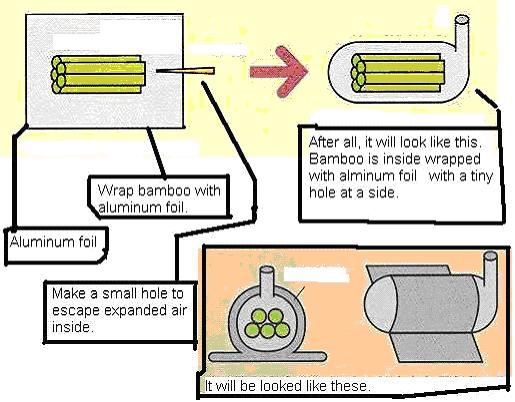
- Place a wire mesh on top of the alcohol lamp and position the aluminum-wrapped bamboo on top of it.
- Light up the lamp to dry the bamboo inside the foil. White smoke will come out from the tiny hole and will turn yellowish. This might produce an unpleasant smell so you will need to open your windows or do it outdoors.
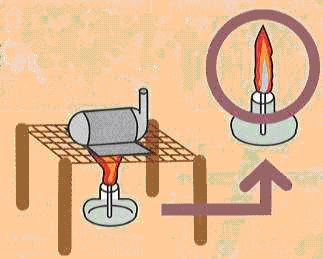
- When the aluminum foil turns yellow, it means the job is done. The yellowish color is caused by the bamboo tar. Do not open the aluminum foil until it is cooled since heat can break the charcoal easily.
Another Simple Way in Making Bamboo Charcoal
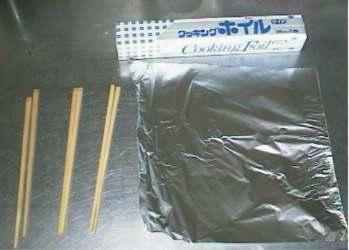
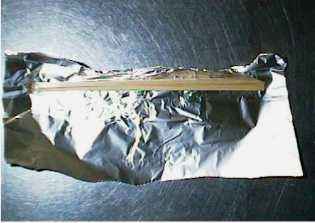
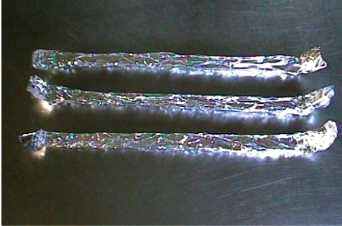
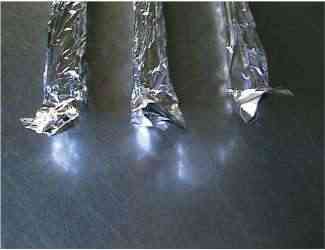
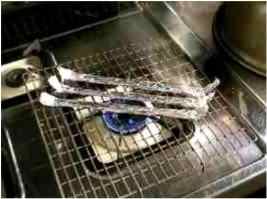
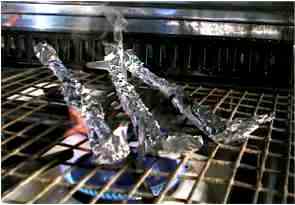
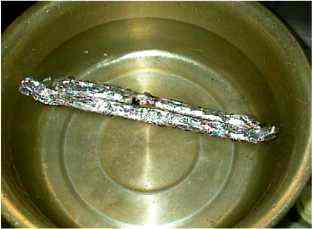
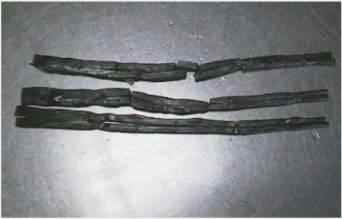
8. Now, open the aluminum foil and you will see hard bamboo charcoals.
Hard and good charcoals do not make your hands dirty black.
Soft charcoals are caused by oxygen present during processing. These are poor charcoals and we cannot use them for our purposes.
Another Procedure in Making Bamboo Charcoal
Bamboo carbonization can be divided into four stages according to temperature and condition in a kiln.
First stage drying: Temperature is below 120°C, and the speed of carbonization is slow. Heat is used to evaporate the water contents in the bamboo. The chemical composition of the bamboo remains intact.
Second stage pre-carbonization: Temperature ranges from 120°C to 260°C, and there is a distinct chemical reaction in bamboo. The unstable chemical compounds begin to decompose and carbon dioxide and carbon monoxide are released.
Third stage carbonization: Temperature ranges from 260°C to 450°C, and the bamboo is decomposed into liquid and gas products. Liquid products contain much acetic acid, methanol and bamboo tar. Flammable methane and ethylene in gas products are increased while carbon dioxide production is reduced.
Fourth stage calcinations (refining stage): Temperature is over 450°C. The bamboo becomes charcoal by providing a mass of heat, expelling the volatile substances and enhancing nonvolatile carbon. Based on the temperature in this stage, the bamboo charcoal can be divided into three groups (low-temperature, medium-temperature and high-temperature charcoal). The quality and properties of bamboo charcoal differs with different temperatures during the refining stage.
Lastly, leave the bamboo to cool down. Depending on the weather, this process may take from 5-8 days when done in large scale.
During the above process, you can extract alcohol, tar, vinegar, medicinal liquid (water form), and many other products. Products from bamboo charcoal have countless uses - from skin diseases, allergies, influenza, heart diseases, stomachaches, insecticides, pesticides, germicides, bactericides, deodorants, disinfectants, gardening, cosmetics, cooking, washing, and hundreds of others.
Reprint Rights: You may reprint this article within your website, blog, or newsletter as long as the entire article remains the same as well as the “About the Author” box.



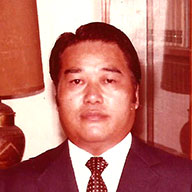 Junji Takano is a Japanese health researcher involved in investigating the cause of many dreadful diseases. In 1968, he invented PYRO-ENERGEN, the first and only electrostatic therapy machine that effectively eradicates viral diseases, cancer, and diseases of unknown cause.
Junji Takano is a Japanese health researcher involved in investigating the cause of many dreadful diseases. In 1968, he invented PYRO-ENERGEN, the first and only electrostatic therapy machine that effectively eradicates viral diseases, cancer, and diseases of unknown cause.
